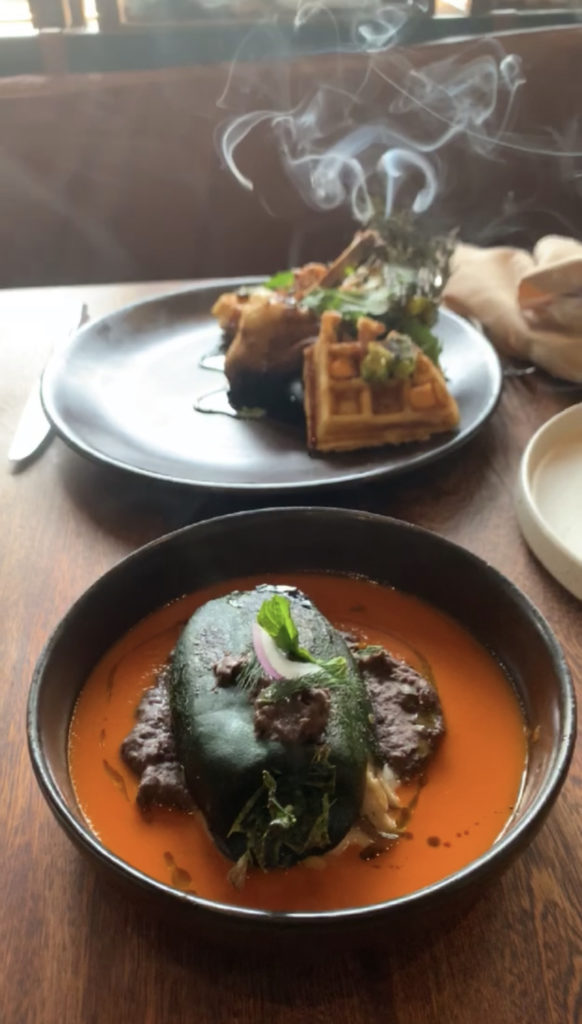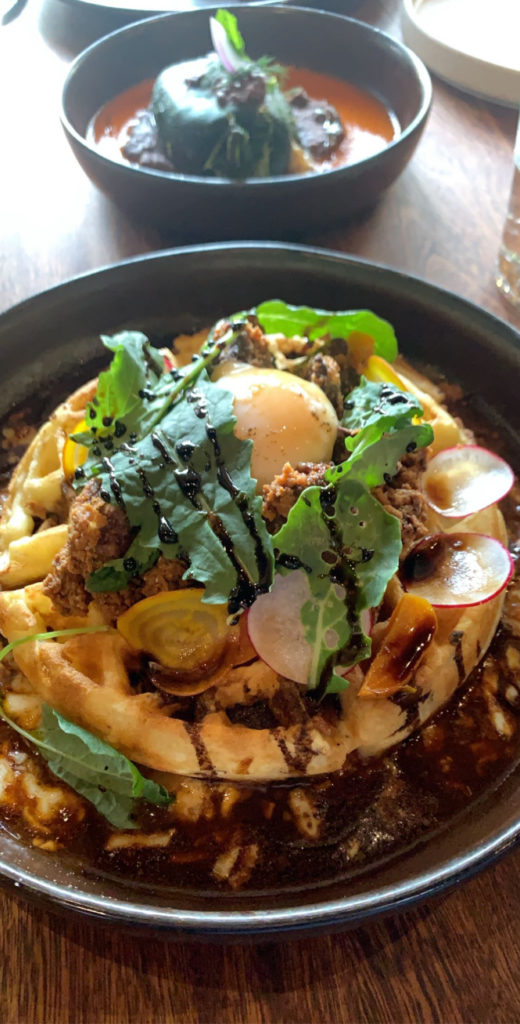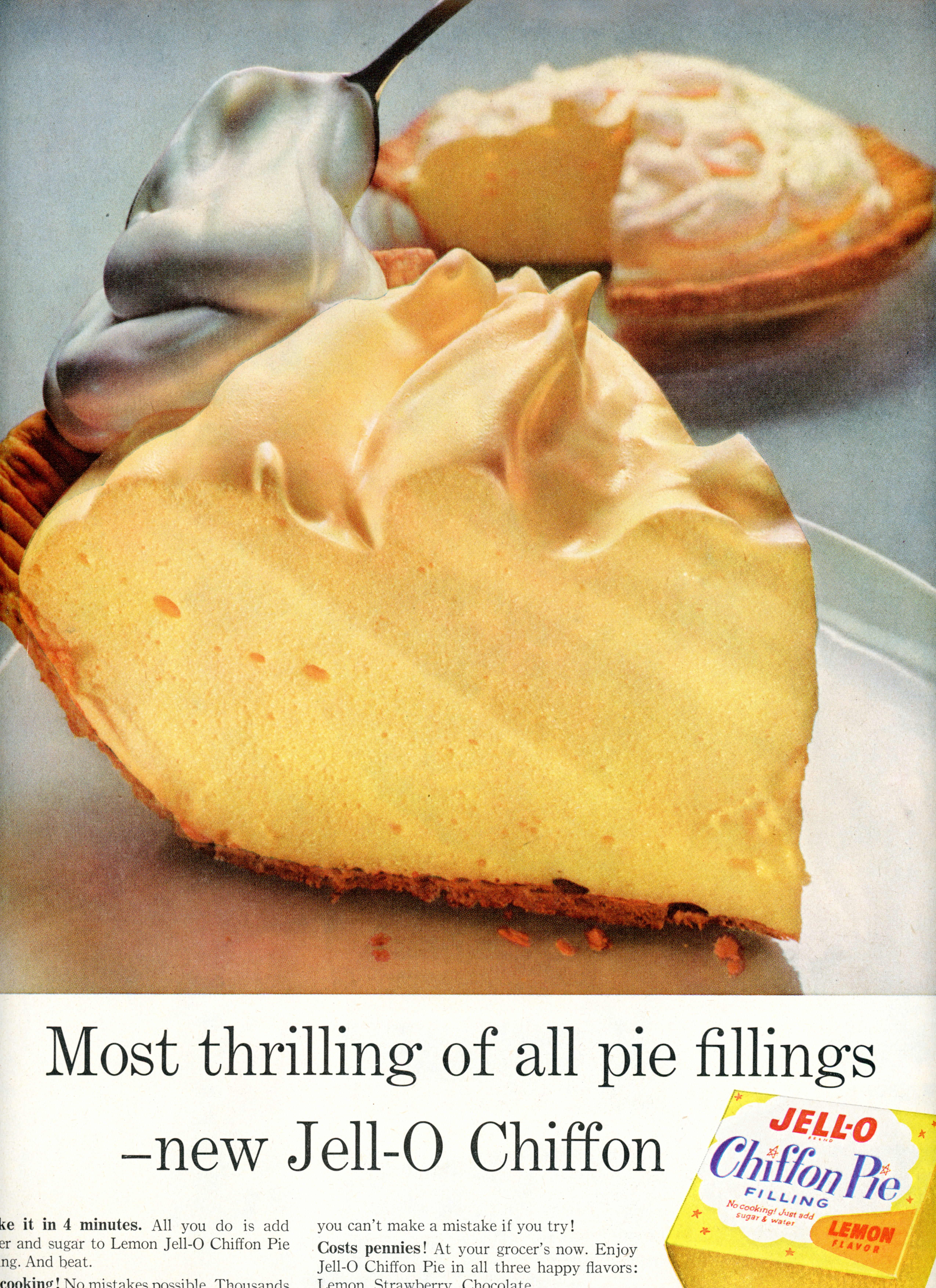Tzuco stands as Chicago’s hottest opening of the year. Sure, Galit has gotten plenty of positive press, Cabra’s Peruvian fare is fantastic, and Gaijin promises to shift the paradigm for Japanese food in the city. Other establishments like the St. Clair Supper Club, CLAUDIA, Wherewithall, and Ciccio Mio merit honorable mentions. But can anyone really compete with Carlos Gaytan? Termed a “game-changer” by Food and Wine, Chef Gaytan opened Mexique in Chicago’s West Town neighborhood in 2008. There, his blending of Mexican heritage with French technique earned the restaurant one Michelin star in 2013 and 2014. That made him the first Mexican-born chef to ever earn a Michelin star before Mexique’s closure in 2018.
The circumstances of Mexique’s closure aren’t quite clear. Though thechef’s ex-wife owned the restaurant’s space following the couple’s divorce,Gaytan insisted he simply wanted to try something new. After a decade runningthe same concept in a relatively quiet part of the city, Tzuco—as it standstoday—certainly represents a “step up” in location and artistry. So, in May of2018, Mexique closed and its chef decamped for Mexico. There, Gaytan focused onHA’ (“water” in Mayan), a restaurant he opened in the Hotel Xcaret Mexicooutside of Playa del Carmen during December of the previous year. While morefocused on using local seafood, Ha undeniably draws on Gaytan’s refined,French-inspired style. The restaurant offers a tasting menu along with à la carteoptions in an imaginative, naturalistic space that displays far more personalitythan the drab brick and wood in West Town. In short, HA’ offered Gaytan thechance to flex his creative muscles before blessing Chicago once more with hiscuisine.
Exactly a year after Mexique’s closure, Tzuco was announced in May of2019. Named for Gaytan’s hometown of Huitzuco in the State of Guerrero, therestaurant—though it would retain the chef’s French flair—would be “a totallyMexican project in the United States.” This meant not just ingredients or wine,but design elements like furniture and the staff itself—which would includeyoung cooks from Mexico. It would also be only the first of three totalconcepts the chef would be bringing to Chicago this year. Located in arelatively quiet corridor in the northeast corner of Chicago’s River North neighborhood,Tzuco opened just four months after its announcement. One month after that,Gaytan opened Panango!, an “on-the-go” Mexican panadería slinging soups,salads, sandwiches, and pastries adjacent to Tzuco. Tales of Carlos Gaytan, a12-seat tasting menu restaurant located within Tzuco, is the last piece of thepuzzle slated to open in December.
What a statement of intent, right? To close Mexique so suddenly butreturn right on time a year later with not one, not two, but three newMexican concepts crafted by the country’s first Michelin-starred chef. Younormally would not bother with such extended background on a new restaurant,but, having never visited Mexique, it was important to understand Gaytan’sreputation and the nature of his “return.” Likewise, though many of Chicago’slauded openings this year come from Michelin (or even James Beard Foundation)awarded chefs, they are spin-offs or more casual concepts. Instead, Gaytan isgoing all-in on a new neighborhood, going toe-to-toe with Rick Bayless andDiana Davila, and expressing himself across casual, refine comfort food, andfine dining realms all under one roof. Tzuco (and its associated concepts) isthe sort of development one would only expect from the city’s biggest chefs,and, after three visits to the restaurant, you think Chef Carlos might have ashot at that title.
To start, Tzuco’s design is gorgeous. Billed as “a unique and poeticspace,” the restaurant’s monochromatic shades of earth brown might seem drab atfirst, but what Tzuco lacks in color it makes up for with the intricacy of itsshelving and the objects displayed therein. You lack the proper vocabulary todescribe just what is being displayed, but you think “dried Mexican flora” or“Mexican countryside” might capture it well enough. (It is certainly far morerustic than the carnival environment of the Frontera restaurants). Theseshelves—which also line the restaurant’s windows—can be seen through easilyenough, forming soft barriers between the entryway, the bar, and certainsections of the dining room. Earthenware discs (again, you lack the knowledgeto identify them any better) also hang at certain spots on the wall, with eightof them lining the wall above the nine high-top chairs facing into Tzuco’skitchen. These chairs, like the chairs and tables in the dining room proper,are made of a sturdy, polished dark wood. You cannot speak for the counterseats, but you have found the furniture—which also includes some sleekbenches—to be both comfortable and perfectly fitted to the aesthetic. Thebathroom also happens to feature a massive communal sink made of stone, whichyou understand to have been commissioned by a Mexican artist.
Looks aside, you must say you were rather disappointed with Tzuco’sfood on your first visit. It was a late reservation (9 PM) on a Monday eveningjust a couple weeks after the restaurant’s opening. You are not sure if ChefGaytan was still leading the line—or in the building at all—but should itmatter? Both ceviches—the tatemado, made with tuna and charredtomatillos, and the verde, made with Hamachi and three preparations ofcactus—fell completely flat. You can forgive the size of the slivers of fish (forthey were tender), but both “leches de tigre” were a muddled mess of flavorslacking any of the vibrancy one expects. Neither came anywhere close totouching the ceviches served in the Bayless restaurants, a rather large blackeye for a native-born Mexican chef. If these marinades haven’t been absolutelymastered, you thought at the time, why even open the restaurant?
The oven-roasted octopus—served with carrots, peas, potatoes, anddill—fared much better. With a mouthfeel that is both rich and exceptionallytender, the dish is rightfully one of Gaytan’s signatures. While the guacamolefeaturing “fresh creamy Michoacán avocados” and grasshoppers was forgettable,you will admit that you generally find avocados to be bland ingredients thatdemand quite a bit of dressing to be palatable. Another dish of shrimp andhabanero pepper in watermelon aguachile was fairly good (not great) andagain left you wondering why the portions of seafood are so small andwell-hidden at the restaurant.
The “chicharrón de pescado” (a fried snapper for two) served duringthat first meal was certainly of a more sizable portion. The plate arrives atthe table with the tail of the fish twisted skywards for an additional flourish,but that same tail tends to get in the way when the dish is being split by alarger party. The fish itself is filleted into chunks and served with a saladof pickled vegetables and a mild salsa veracruzana. Though the fishitself was moist, the skin lacked any crispness and seemed to defeat the pointof frying it altogether. The salsa, as well, was a bit too mild, the flavors ofthe entire dish a bit too muted—save for the pickled vegetables which actuallydid the most to brighten proceedings. Though many customers will undoubtedlyorder this snapper, it comes nowhere close to the fried snapper offered atCabra (nor does it best Leña Brava’s excellent grilled striped bass).

You finished that first meal with Tzuco’s 20 oz. bone-in, dry-aged “carneasada” ribeye. Like the fish, it was well cooked (though perhaps also inneed of a healthier char). Oven-roasted tomatoes and three or four fingerling potatoesformed the accompaniments, along with a goat cheese fondue to pour over themeat. The fondue’s texture was on the money. Its flavor was generally pleasingas well. Yet you cannot help but think that putting richness on top of richnessis a bit too much. The dish would likely benefit from something along the linesof Leña Brava’s “smoky steak salsa” (served with their 32 oz. tomahawk) orPacific Standard Time’s “miso bagna cauda” (served with their ribeye) whichboth cut the richness of the meat and accentuate the beef’s flavor rather thanmerely use it as a canvas for cheese.
It took you nearly a month and a half to return to Tzuco, intrigued byPhil Vettel’s prediction that the restaurant would likely earn a Michelin starnext year. This admission did not jive with your own experience, and you beganto make excuses for what was a rather forgettable first meal. “It could havebeen a off night,” you thought to yourself. “It was a late reservationon a Monday night,” you figured (as if a restaurant worthy of a Michelin starcould ever “switch off” in such a way). The execution of the ceviches continuedto bother you—could they really be that underwhelming? There had to besome error in the preparation of their marinades. Perhaps you were served thevery last of that day’s batch? In the end, you relented and booked tworeservations for the same week—a Tuesday and a Thursday—both around 6 PM.
The Tuesday visit featured some familiar dishes from your first visitalong with a selection of other dishes that you did not get to try. Over amonth later, the ceviches were more or less the same compositionally. Theirrespective marinades seemed better balanced, but diners must accept that theydo not aim for the tart and refreshing citric notes one expects. Rather, theyindulge in smokier, spicier flavors that deserve at least some credit for theircreativity. Nonetheless, citrus would appear by way of the home-curedlemon zest topping a flatbread of avocado, ricotta cheese, and salsa macha.This dish, which you hadn’t tried prior, impressed the table with its size.However, much like the guacamole, the avocados—even with the flatbread’s accompanyingingredients—come across as tasteless mush. The texture of the flatbread itselfwas also suspect: the end pieces possessed a pleasantly crisp crust while thosein the middle were doughy and did even less to contrast the avocados’mouthfeel.
The octopus that evening impressed your guests, and a dish of PrinceEdward Island mussels was quite pleasing too. The bivalves arrived in a pool ofsaffron beurre blanc studded with dried chorizo and pickled jalapeños. Theaccompanying round of bread was beautifully charred on the grill and a thoughtfulway to soak up the remaining sauce in true French fashion. Your only critiqueis that the mussels’ serving vessel is a bit too shallow and only works toobscure how few mussels one receives relative to the heaping bowls brought outat typical bistros.

A new dish of corn esquites—made from Tequesquite sweet corn, chilede árbol, mayonnaise, and Huitzuco cheese—also suffered from a half bakedpresentation. The aforementioned ingredients arrive in a sealed mason jar withinstructions for the guest to shake them vigorously together and then pour itall into an awaiting bowl. One of your guests dove headlong into the task, onlyto find the jar was improperly sealed. Even after trying to screw the cap onmore tightly, it released an off-putting mayo ooze that coated her hands.Thankfully, one of the bussers quickly intervened to fix the jar and offer atowel. However, by the time the esquites entered the bowl, they were lukewarm.Their flavor was otherwise pleasant, and it should not be difficult to avoidsuch problems in the future.
When it came to entrees, you first gave the fried snapper anotherchance. The table enjoyed it—particularly with the fresh tortillas, which youneglected to mention—but fish’s crispness still left much to be desired.Perhaps that’s ultimately not the chef’s desired texture, but it is hard to seethe word “chicharrón” and not expect a pleasing crunch. While the fish was afamiliar presence on the table, you decided to ditch the carne asada duringthis second visit in favor of a few of the other meat dishes. You ordered oneeach of the “barbacoa de cordero” (lamb), “pork pibil,” and “costillasde res” (beef short ribs) but, through some sort of miscommunication,received two plates of the lamb and one of the pork. Given the breadth of theorder you placed with the server all at once, you cannot really fault therestaurant for a minor error in transcription. Besides, you were quite pleasedwith what did arrive.
The lamb barbacoa is actually a large bone-in cut from the neckthat is steamed in Maguey leaves (taken from the agave plant) and served atop agarbanzo bean purée with a fermented milk called jocoque. The hunk ofmeat arrives at the table standing upright, and one only needs to apply theslightest press of the fork for the slender, central bone to slide out. Then,the flesh just about falls apart into succulent chunks that retain just theslightest of chews. The lamb’s flavor is deep but devoid of any gameyness. Thegarbanzo purée does a perfect job of absorbing all the juices and thickeningthe feel of the dish while the jocoque, meanwhile, provides a pleasanttang that reminds one of traditional Mediterranean lamb preparations.
The pork pibil is another dish Gaytan should be proud of. Theshank is prepared Guerrero style—that is, the chef’s mother’s version ofa regional recipe typically braised with onions, garlic, allspice, and variouschiles. Instead of the traditional sour orange component, the chef, like hismother, makes use of a pineapple vinegar. Similar to the lamb, the pork shankarrives with a pair of bones that lift away from the juicy meat with the mostminor of tugs. Here, a ramekin of avocado-infused black beans plays the role ofthe garbanzo bean purée (that is, to stick to your ribs a bit and soak up any drippings).In the same manner, a garnish of habanero-pickled red onion cuts the meatsrichness much like the jocoque did. Unlike the restaurant’s fish and theribeye preparations, you think this pibil clearly bests Leña Brava’s porkshank carnitas (and at a fraction of the price too). The pibil,like the barbacoa, is a benchmark dish where Gaytan truly struts hisstuff and upon which Tzuco can build a reputation worthy of all the media hype.
Your third visit to the restaurant—just two days later—chiefly servedto underline your prior observations. Nonetheless, there were a couple newthings in store. To start, you tried one of Tzuco’s cocktails for the firsttime: a “Papantla” made of Casa Dragones tequila (“fat washed” in-house usingbutter) mixed with Topo Chico (sparkling water), egg white, lemon, crème deviolette, and beet. Perfectly balanced in its interplay between sweetness andrichness, the Papantla might stand as one of your best restaurant cocktails of2019. You made sure to order a second one (that, for the record, went down evenmore easily) despite the “Rum Smash” and house margarita also catching youreye. The “fat wash” technique on the tequila is a winner, working to cut any ofthe heat from the alcohol and adding a dynamism to the bar that goes beyondjust “batching” cocktails for a busy night catering to those poor souls withoutreservations.
When it came to the food, your third trip took some familiar turns.Both ceviches, the avocado flatbread, the guacamole, and the fried red snapperdisplayed the same flaws outlined during the course of this piece. However, themussels, roasted octopus, shrimp and watermelon salad, lamb barbacoa,and pork pibil made similarly strong showings that worked to charm thenewcomers in your party. The carne asada made an appearance once more,and, though one of your guests chose to omit the goat cheese fondue, he foundthe dry-aged ribeye to be perfectly cooked and rated it as one of his favoritesteaks in recent memory. The braised short ribs (costillas de res) alsofound their way to the table this time, offering perhaps the most explicitlyFrench preparation of anything on Gaytan’s menu. The fall-apart tender beefarrives atop parsnip purée with fennel, baby kale, and supremed orange. Whilethere is no question that this is a well-executed, rather refined dish, itlacks the imagination (and, ultimately, the arresting flavors) of Tzuco’s lamband pork preparations. Still, it works to showcase the chef’s culinary chopsand stands as a welcome addition to the menu for those feeling a bit flavorshy.

While you certainly ordered dessert after each of your three dinnersat Tzuco—in fact, you ordered all four items on the menu twice—you simply havenot found much to write home about. The chocolate cake and vanilla ice cream “pingüino”or the hazelnut cake and salted caramel ice cream “gianduja” might beyour natural favorites, but they are simply pleasing, serviceable dishes thatdo little to reinvent either French or Mexican pastry tradition. The “jericalla”(referring to a Guadalajaran custard dessert) takes the form of a brûlée foamserved with sherry ice cream and raisins while the last dessert—titled “lima/ guanabana / aguacate”—combines lime-infused tapioca, guanabana (soursop)sorbet, and avocado foam. Compared to the first two desserts, these are moreconsciously inspired by Mexican flavors. Nonetheless, lacking any nostalgia asa reference point, they also remain in the “good, not great” category. Toclarify, you would not dissuade any customer from ordering these desserts; theysimply do not rise to the same heights as the restaurant’s best savory dishes.
Thinking you were done? To cap things off, you made a visit to Tzucoduring the opening weekend of their brunch service. Rather skeptical that themenu might simply rehash what the restaurant offers at dinner, you were impressedat the breadth of new dishes and cocktails on offer. To drink, a chilaquilesbloody mary boasts homemade tortilla liquor as a base that is then combinedwith a “bloody mix” and lime juice. Upon its arrival, you found the pale yellowcolor of the drink to be a bit arresting, but it rightfully signifies thatthere is next to no tomato flavor in this bloody mary. Nonetheless, thetortilla liquor is crisp and clean, making for a cocktail that is only mildlyspiced and pleasantly refreshing. A pico de gallo martini—made withserrano pepper and cilantro infused tequila combined with cherry tomato andonion mix—was far more difficult for you to drink. Despite the tequila base, itreminded you of an actual martini (and might please those who favor the actualcocktail). All that being said, the brunch cocktails are unabashedly creative,and the menu contains plenty of “safe” options like a cava mimosa, a michelada,and a grapefruit-lemongrass paloma.
Tzuco’s brunch menu does draw on a few items you tried at dinner—namelythe avocado flatbread, hamachi ceviche, mussels, and pork pibil—alongwith others you hadn’t sampled across the three visits like a steak tartare, anarugula salad, and a chile relleno. You wouldn’t necessarily say theseare all dishes worth transferring to daytime, but their presence offersthose unable to make it to dinner a slice of Gaytan’s more savory options.Plus, there’s not much you can complain about upon tasting the dedicated brunchofferings.
For one, an “Acapulco style” shrimp cocktail fulfills everything thetwo ceviches have lacked. The dish pairs the same shrimp from the shrimp andwatermelon salad (here, served whole instead of diced) with pico de galloand places it all under a crispy baked tortilla crust. Customers are instructedto crack the tortilla with their spoons then pour a small pitcher of cocktailover the top. While cracking the crust is a good bit of fun, the flavors andtextures offered are resplendent. The shrimp are plump and better appreciatedwhole, and their texture grows even more delightful should you choose to addthe lovely chew of octopus into the mix for a small supplement. The cocktailsauce—which is a bit more watery in texture than the classic kind—absolutelybursts with smoky, spicy, citric, and deep-roasted tomato flavor. You wanted tosubstitute the cocktail sauce for the “bloody mary mix” in your cocktail—that’show good it was. The dish displayed a mastery of seafood that had sadly beenlacking outside of the roasted octopus dish, and it really speaks to apotential for the ceviches themselves to improve in due course.
Two types of waffles also proved particularly impressive. The first,featuring a duck leg confit, brussels sprouts, sweet potato purée, and ajamaica glaze, arrived at the table with a smoking sprig of lavender. Thesecond preparation lacked those fireworks but featured fried chicken livers,pickled yellow beets, and poached eggs in a spicy balsamic glaze instead. Simplyput, both waffle dishes were exceptional. While the duck leg impressed with itscrispy outer skin and succulent inner flesh, the chicken livers were trulyphenomenal. They boasted a crispness that one dreams of having on the redsnapper with a homogenous, moist inner texture that only a master of offal canexecute. The waffles themselves were nicely made and not too sweet, allowingthe sweet potato and balsamic in each respective dish to drive the flavortowards somewhere in between savory and sweet.
The brunch menu also offers two kinds of crepes, a “croque Tzuco,” chilaquiles,(and a “torta de chilaquiles” to boot). There’s even a fish tacos dishmade from the same red snapper as the chicharrón at dinner. At brunch, the fishis filleted and pan-seared, and one wonders if the texture is any better thanthe version that is, ostensibly, “fried.” Those craving sugar may find theiroptions are a bit more limited. A “Pan de Muerto” French toast forms the lonecomposed sweet plate—yet, from the glance you stole at it, the dish looks likea winner by way of orange blossom foam, whipped cream, and Mexican chocolate. Theother option, titled “Mexican sweet bread service,” comes by way of thePanango! bakery next door. Customers can choose from a tray of various conchasand croissants for five dollars a piece. You indulged in this after thewaffles and was not left disappointed, as the pastries possessed an etherealtexture and slight chew that demonstrated far more finesse than the dessertsoffered on Tzuco’s dinner menu.
So, after four visits to Tzuco in the two months following itsopening, just how do you rate the food? First, it is worth saying that therestaurant is rather consistent in its execution. While this means that certainitems like the ceviches and the avocado flatbread never really improved,it speaks to the kitchen’s skill in executing Chef Gaytan’s vision. Likewise,this characteristic ensured that favored items like the lamb, pork, and steakmaintained their quality across several visits. Not only that, but the pacingof each of the three dinners remained remarkably consistent despite eachfeaturing plenty of food across three different days and reservation times.
Both these factors are the building blocks of a truly great restaurantand reflect very well on how Gaytan manages his kitchen. Truth be told, thedishes you were less enthused by were not horribly flawed, but just in need oftweaking. It is far better to have a crack team in place (and merely need totweak one’s recipes) than to have developed the perfect flavors and fail to getthe food out in a timely, consistent manner. The former can easily be builtupon, and, if brunch is anything to go by, Gaytan is overflowing with ideas andwill surely settle on the very best of them as time goes on.
Bridging the gap during this process of culinary experimentation andrefinement is, as always, the front of house staff. There is no question thatyou would have hesitated to ever return to the restaurant had your experienceswith the hostess, server, bussers, and manager been anything less thanpositive. For what is the difference between a restaurant on the path towardsglory and one content making money with mediocrity? Attitude. That is, apositive energy sensed from the staff that can only emanate from the very topof the organization (where it takes the form of the chef’s creative energy and,thus, the continual process of improvement).
Tzuco employs a team of front-of-house all-stars from across the city.You recognize some of them from various restaurants around town. Some, they revealedwhen speaking with you, worked at Mexique and were eagerly awaiting the chef’sreturn. Others merely knew of Gaytan’s reputation, the scope of his project,and excitedly climbed aboard. No matter what brought the team together, theyare sharp. Not only do the servers embrace the hard work of convincingcustomers on some of the menu’s more adventurous items like cactus andgrasshopper. They are kind, expressive souls who never rush diners, and theyform a perfect partnership with the bussers. Tzuco’s bussers do more thanrefill water and clear food. They are the proper “eyes and ears” of therestaurant and operate with enough room to quietly observe parties and bringthem more tortillas or make room on the table at just the right moment.Few restaurants can anticipate their customers’ needs in such away, and thestaff here does so effortlessly. Is it training? Hiring? Paying enough peopleto be on the floor? It is hard to say, but the hospitality is almost unerring.
In the final analysis, the food at Tzuco is engaging. The restaurant’s style, seen both on the plate and around the room, transcends Chicago’s more traditional Mexican fare. However, what’s most impressive is the culture Chef Carlos has created. That is what will make the three varied concepts under his roof a success, even as they cater to completely different customers. At this moment, the restaurant stands as an impressive showcase of Gaytan’s talent. There is certainly room to grow—and, if the menu sees dishes cycle in and out dynamically, it won’t be long until the bill of fare is filled with “winners.” But, nonetheless, Gaytan has earned his hero’s welcome back to Chicago, and you eagerly await his first true foray into fine dining later this year.




